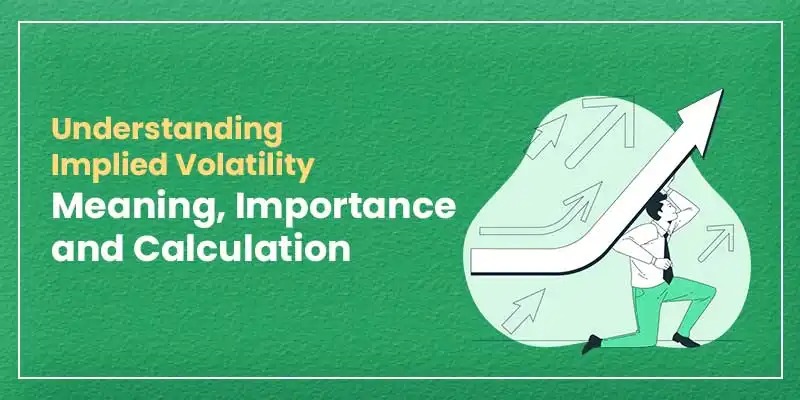Implied volatility is a measure used in options pricing and market analysis. It represents the market’s expectations regarding future price fluctuations of an underlying asset. Unlike historical volatility, which is based on past price movements, implied volatility is derived from option prices and reflects current market sentiment. Understanding this concept is important for market participants in India as it provides insights into potential market movements.
Contents
- What is Implied Volatility
- Why is Implied Volatility Important
- How is Implied Volatility Calculated
- Application in Indian Markets
- Conclusion
- FAQs
What is Implied Volatility
Implied volatility represents the market’s expectations of potential price fluctuations in an underlying asset. It is calculated using pricing models like the Black-Scholes model and is reflected in options contract prices. A higher implied volatility suggests that the market anticipates greater price fluctuations, while lower implied volatility indicates relatively stable price expectations. However, it does not predict the direction of price movement, only the magnitude of potential changes.
Read Also: The Importance Of Strike Price In Option Trading
Why is Implied Volatility Important
Implied volatility provides insights into market sentiment and expectations regarding future price fluctuations. A rise in implied volatility may indicate uncertainty, often influenced by economic events, political developments, or global market trends. Conversely, lower implied volatility suggests market expectations of stability. Traders and investors monitor implied volatility to assess option pricing and potential market movements.
This idea is beneficial when trading options. It helps traders determine whether an option is relatively expensive or cheap compared to its past average and assists traders in pricing options contracts. This data can help investors change their plans to fit the new knowledge. Moreover, implied volatility can indicate market stress or ease, assisting traders in determining the general state of the market.
How is Implied Volatility Calculated
Implied volatility is derived using options pricing models, such as the Black-Scholes model, where it is the unknown variable. The calculation involves.
- Selecting an options pricing model (e.g., Black-Scholes)
- Inputting known variables such as the underlying asset’s price, strike price, time to expiration, and risk-free interest rate
- Solving for volatility, ensuring the theoretical price aligns with the market price of the option
While the calculation requires numerical methods and iteration, most trading platforms provide implied volatility as a readily available metric.
Application in Indian Markets
Implied volatility is widely used in the Indian derivatives market, particularly in options trading on exchanges such as NSE and BSE. It’s useful for:
- Evaluating Options Prices: Traders can determine whether options are priced favorably by comparing current implied volatility with past levels.
- Market Analysis: Implied volatility shows how people feel about the market. When volatility levels are very different from what they have been in the past, it could mean that investors are acting differently.
- Strategy Formulation: Investors can make plans that work for them, whether they want to take advantage of high premiums when markets are unstable or look for chances when premiums are low.
Read Also: Understanding Option Premiums: What Factors Impact Pricing?
Conclusion
Implied volatility is an essential concept in options trading, providing insights into market expectations of price fluctuations. While it plays a crucial role in assessing options pricing and market sentiment, it should be used alongside other analytical tools for a well-rounded market analysis. Investors should carefully evaluate its implications and consider broader market conditions before making trading decisions.
Disclaimer: Investments in the securities market are subject to market risks; read all the related documents carefully before investing.
FAQs
Historical volatility measures past price fluctuations, while implied volatility reflects the market’s expectations of future price movements based on options pricing.
Implied volatility is primarily used for options pricing and short-term market sentiment analysis. While it can offer insights into broader market conditions, long-term investment decisions typically rely on fundamental analysis and other financial metrics.
Actively traded options on big platforms like NSE and BSE are most likely to be able to get it.

